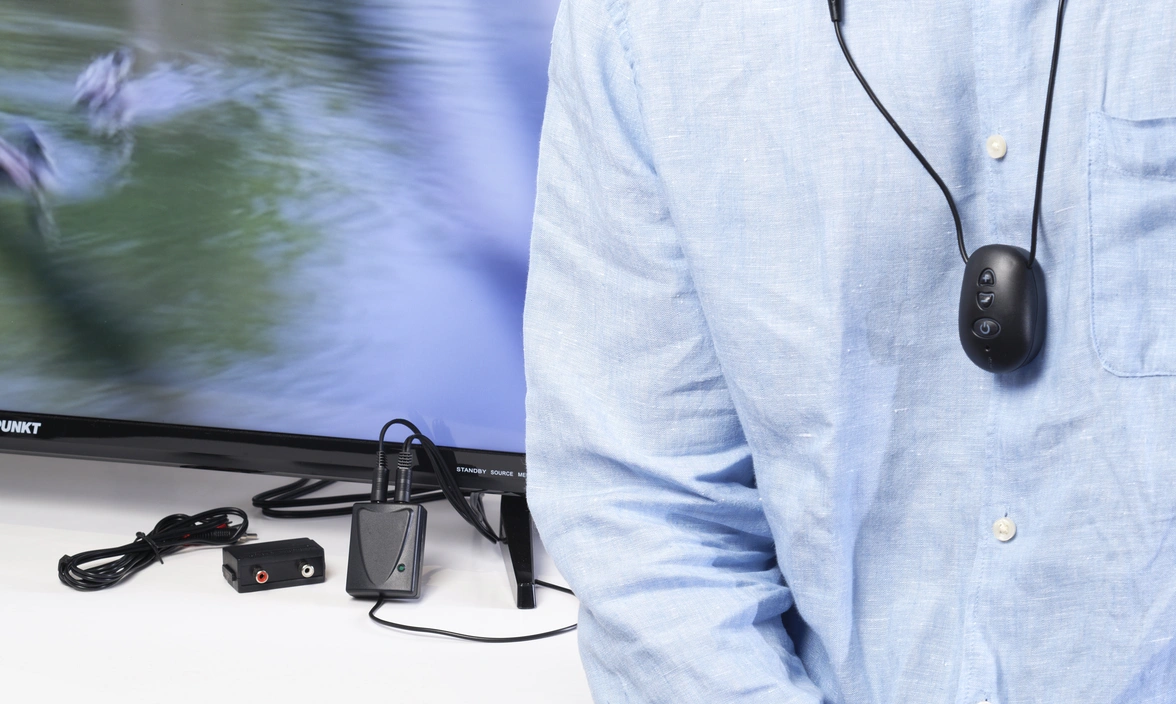Introduction to assistive technology
Assistive technology plays a vital role in enhancing communication, independence, and overall quality of life for people with hearing loss.
Assistive technology plays a vital role in enhancing communication, independence, and overall quality of life for people with hearing loss.

Whether at home, work, or in social settings, assistive listening technology is designed to support different situations and types of hearing loss. Depending on your personal needs, one or a range of devices could help you to stay connected with the world around you.
Assistive listening devices (ALDs) are helpful tools that make it easier for people with hearing loss to hear and understand sounds, especially in noisy or difficult listening situations. They can be used with or without hearing aids and come in various forms.
They work by bringing sound closer to the ear and making it louder and clearer, which helps reduce the effects of background noise, distance, or echoes.
There are several types of ALDs, which have been designed for different situations. The main types you will find are:
View further information on these systems by clicking the links above or reading on this page.

FM systems are wireless tools that help people hear more clearly, especially in noisy places or when the speaker is far away. They are useful for people who wear hearing aids or cochlear implants, and for those who do not.
FM stands for Frequency Modulation, a way of sending sound without much background noise.
An FM system has two main parts: a transmitter (which picks up the sound) and a receiver (which sends the sound to the listener). There are several types of receivers.
Some are worn around the neck and work with hearing aids set to the “T” setting. Others plug directly into hearing aids or cochlear implants. People who do not wear hearing aids can use headphones.
Some FM systems connect to phones using Bluetooth, so phone calls can be heard clearly. The microphone on the transmitter can pick up sound from all directions or focus on one direction, depending on the setting.
They are small, light, and usually rechargeable. Some systems let more than one person listen at the same time. FM systems are helpful in places without hearing loops, like restaurants. Prices range from £250 to over £4000.
Bluetooth hearing aids and listening devices help people with hearing loss by letting them stream sound directly from phones, TVs, and other devices.
This means clearer sound for things like phone calls, music, and shows - especially in noisy places.
Compatible hearing aids often come with apps, so users can easily change the volume or settings.
New features like Bluetooth Low Energy (which saves battery), Auracast (which shares audio with multiple devices), and ‘Made for iPhone’ (designed to work directly with Apple devices) make it even easier to stay connected and in control.
The right device or system for you can depend on your hearing loss and where you need communication access.
Typically, these are small, portable devices with a microphone and headphones or earbuds. They are useful for close conversations or watching TV at home.
These devices help people with hearing loss feel more confident, stay connected with others, and enjoy more of the sounds around them - whether they’re at home, at work, or out in the community.
Registered charity in England and Wales no. 293358 and in Scotland no. SC040486. Royal Patron HRH The Princess Royal.